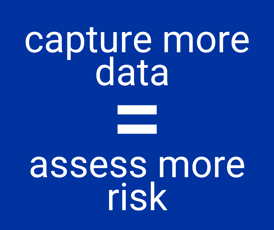How to Build a Business Case For Your Boss
You’ve finally done it. You’ve gone through our evaluation checklist, you’ve researched how to be prepared for implementation, and you’ve already scheduled a demo. But now it’s time to present your case to the final decision maker: your boss (or possibly even bosses). How do you convince them to invest in new software that will help your team finish work faster, win more projects, and create standardized estimating processes, especially if they are reluctant to change?
The first step in creating a business case for your company to invest in new software is to recognize the need for change or otherwise get left in the dust. Clark Pacific, manufacturer of prefabricated building systems writes, "Using technology as a foundation, construction firms can not only break down silos, they can also integrate the construction supply chain. McKinsey predicts that construction value and profit pools will shift dramatically, and by 2035, total profit pools may double, unlocking $265 billion in potential new profit for stakeholders who take the lead in embracing change."
Where do you even begin to start getting a slice of the pie?
Before we get into the how of building a business case for adopting a new construction estimating software, it’s important to acknowledge a common hesitation—waiting for the right time. You might be tempted to wait to approach your boss until after a certain project finishes, or until a 'slower' month but the truth is, there will never be a perfect time to make a case for moving to new software. It will always require a significant amount of time and resources.
The question shouldn’t be “when’s the right time.” Instead, ask yourself, “Will the investment be worth the reward?” If you can answer “yes,” then you’re ready to approach the decision-makers and make your pitch.
There are three key components you will want to tackle when making your pitch:
- First, you’ll want to go over some of the biggest problems your company is facing today.
- Secondly, you’ll want to discuss how the construction estimating software you’re looking at solves those problems—and ideally, you’ll want to point to some of their previous customer success stories, so that your bosses know it’s not just boasting on the vendor’s part.
- Finally, you’ll want to explain how investing in this software will be a net benefit to your company, and what you’ll expect to accomplish once it’s fully implemented.
But how exactly does one go about crafting these points? Let’s take a closer look.
1.The problem
The first step to any successful pitch is laying the foundation. Maybe your team has been spending longer and longer hours at the office. Maybe you keep running into situations where project owners request changes during a meeting and due to the limitations of your current estimating system, you’re not able to update the estimate until you get back to your desk. Or perhaps you’re getting more bids than ever, but expected to turn them around in less time.
Whatever your company’s unique challenge is, make sure to really dive into that. Give specific examples of how this has affected efficiency and output—if it’s cost you project wins in the past, definitely include that. Additionally, it’s also critical to highlight if you lost said projects to competitors who are using updated technology.
2. The solution
This is where it’s essential that you know the software you want to choose inside and out. At Beck Technology, we call these champions and when you’re trying to convince someone to make a huge investment, that’s exactly what you better become! At this point, if you haven’t done a demo or walked through an implementation plan, stop what you’re doing and go back to square one. It’s absolutely essential to have experienced and hopefully even played a bit with the software yourself before trying to make a case for it.
Just as important is fully knowing the vendor. A construction estimating software is only as good as the people behind it. Did you enjoy working with the vendor? Were they quick to answer your questions? Were they willing to be transparent and discuss any potential shortcomings of the software? Did they let you speak to their current clients? You need to able to say “yes” to all of these in order to have a successful conversation with your boss.
Once you’re sure that you know the software and the vendor like the back of your hand, it’s time to focus on how they’ll solve the current challenges you’re facing. However, don’t only focus on the features you’ll use. It’s very likely that the software may have features that your team won’t have a practical use for at the moment—but if it’s something you’re planning to incorporate more of, such as 3D takeoffs, it’s just another great selling point to know that your software will already support that, and you won’t need to wait for updates.
3. The proposed benefits
Last but certainly not least, you need to have a list of what you’ll expect to see change after you’ve fully implemented the new software. Don’t forget to touch on what implementation will look like—how it will be onboarded to your company and what the timeline will be. It’s important that you’re all on the same page, and the reality is that implementing a completely new construction estimating software will definitely take time. This is where the list of benefits is key. Once you are done with the implementation, what’s going to be different? You’ll want to look for things such as reduced time in the office, faster/more automated workflows, and increased collaboration between offices if you have multiple.
While we hope these three tips will help you lay the groundwork for a business proposition for a new construction estimating program, we also want to remind you that it never hurts to reach out to your vendor for additional assistance. Don’t be afraid to ask them to provide you with resources like case studies, testimonials, even PowerPoint slides.

-1.png?width=112&height=112&name=image%20(4)-1.png)














-1.png?width=310&height=230&name=MicrosoftTeams-image%20(16)-1.png)
